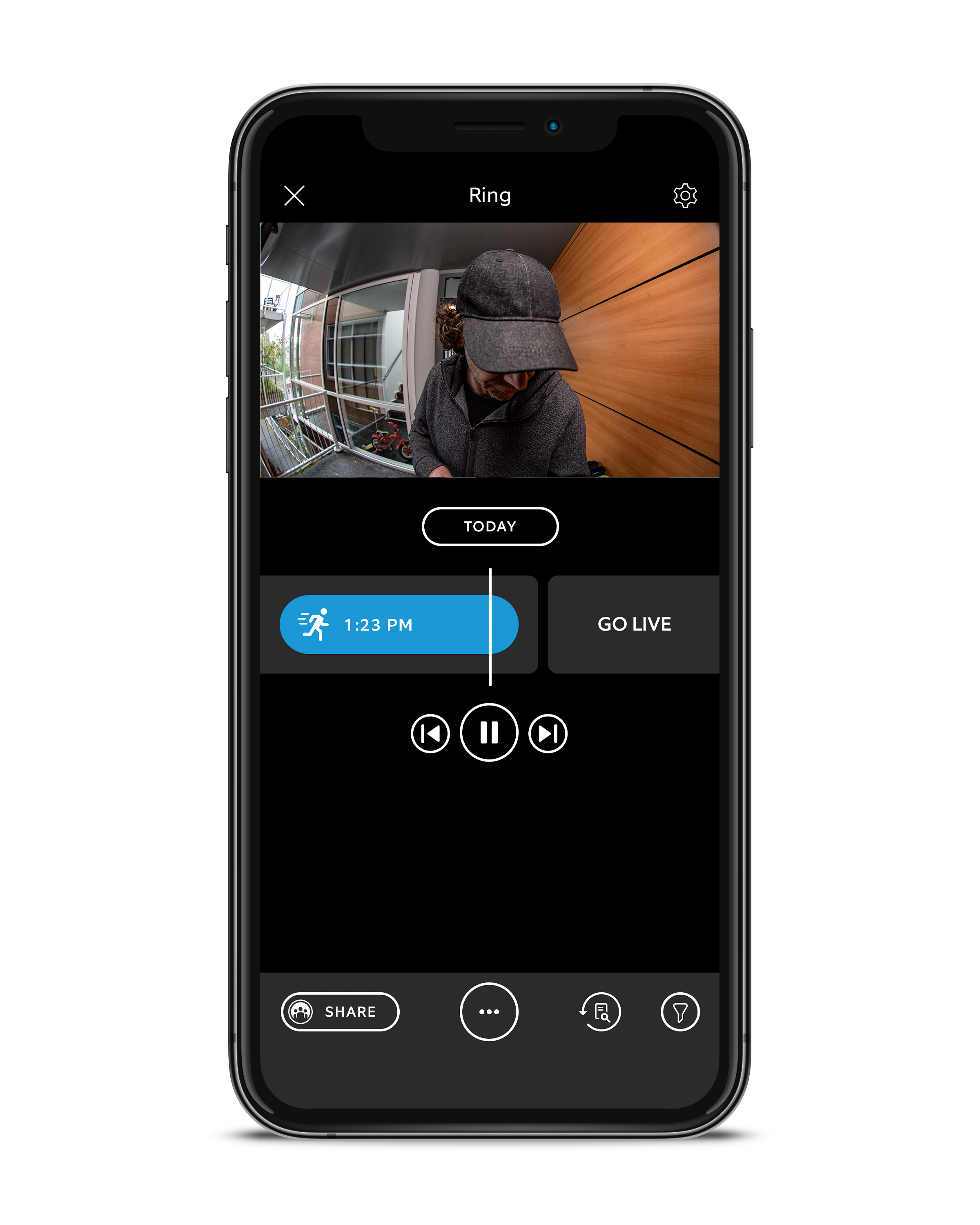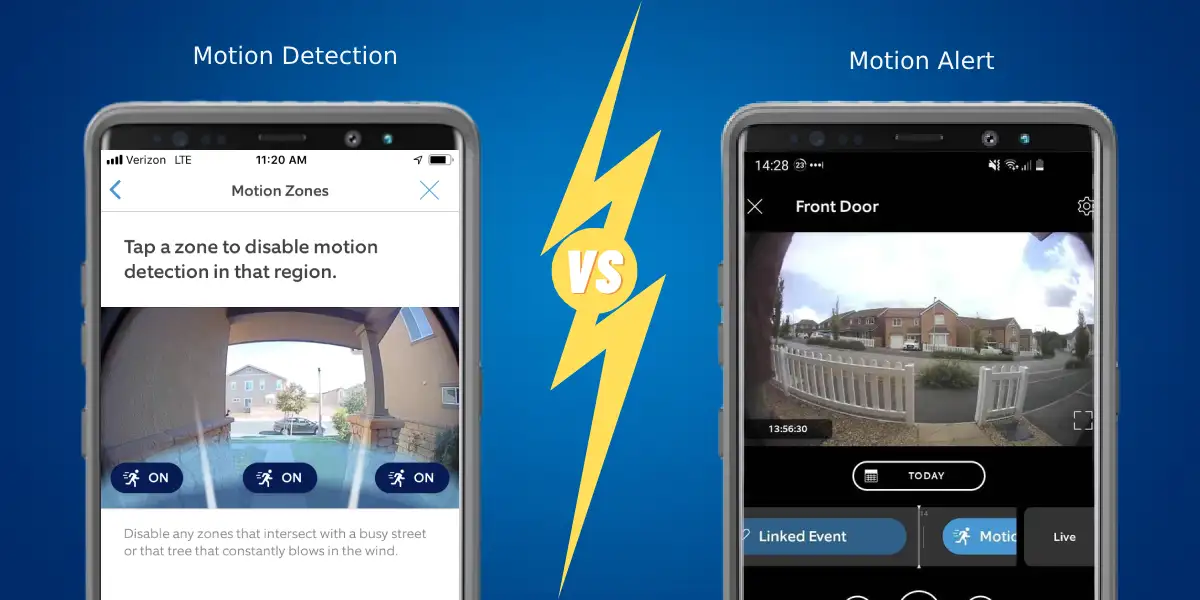When it comes to home security, knowing what’s happening around your house is crucial. Ring Motion Alert and Motion Detection are two features that can make a huge difference in protecting your property. But what exactly are they, and how do they work? If you're scratching your head trying to figure out the difference, don’t worry—you're not alone. Today, we're diving deep into these technologies so you can make an informed decision.
Let’s be honest, nobody wants to deal with break-ins or unexpected visitors. That’s why smart home devices have become super popular. Among them, Ring stands out as a game-changer. But here’s the thing—Ring Motion Alerts and Motion Detection aren’t exactly the same thing. Understanding the distinction between the two will help you maximize the potential of your Ring setup.
Now, before we dive into the nitty-gritty details, let’s set the stage. Whether you’re a tech-savvy homeowner or someone who’s just dipping their toes into the world of smart home security, this article has got you covered. We’ll break down everything you need to know about Ring Motion Alerts and Motion Detection, including how they work, their benefits, and which one might be better for your needs.
Read also:2004 Red Sox Roster The Historic Championship Team
What Are Ring Motion Alerts?
Alright, let’s start with Ring Motion Alerts. These are basically notifications you get on your phone when the Ring device detects movement in a specific area. Think of it like having a personal security guard who texts you whenever something’s up. Cool, right?
Here’s the deal: Motion Alerts are powered by advanced sensors that can detect even the slightest movement. When something crosses the sensor's field of view, your phone buzzes with a notification. But here’s the kicker—Ring lets you customize these alerts based on zones and sensitivity levels. So, if you don’t want to get notified every time a squirrel runs across your yard, you can adjust the settings to focus only on high-traffic areas.
How Do Ring Motion Alerts Work?
Let’s break it down step by step. First, your Ring device uses infrared sensors to detect heat signatures. When it picks up a change in temperature, it triggers the motion detection system. Then, the device sends a notification straight to your smartphone via the Ring app. Simple, right? Well, not exactly.
There’s a lot going on behind the scenes. The device uses AI algorithms to differentiate between people, animals, and other objects. This means fewer false alarms and more accurate alerts. Plus, you can set up “activity zones” to specify which areas you want to monitor. For example, you can create a zone around your front door but ignore the backyard where your dog likes to roam.
What Is Motion Detection?
Motion Detection, on the other hand, is a broader term that refers to the ability of any device to detect movement. While Ring Motion Alerts are specific to the Ring ecosystem, Motion Detection can be found in various smart home devices. In essence, Motion Detection is the foundation upon which Ring Motion Alerts are built.
Now, here’s where things get interesting. Motion Detection doesn’t always come with notifications. Some devices simply record video when they detect motion, while others send alerts to your phone. It all depends on the device and its features. Ring takes this concept to the next level by integrating Motion Detection with its proprietary alert system.
Read also:Discovering The Heart Of Faith Manchester United Methodist Church Missouri
Key Differences Between Ring Motion Alerts and Motion Detection
So, what sets Ring Motion Alerts apart from generic Motion Detection? Here’s a quick rundown:
- Customization: Ring Motion Alerts allow you to tailor the notification settings to your preferences. You can choose which zones to monitor and set sensitivity levels.
- Accuracy: Thanks to AI and machine learning, Ring Motion Alerts are more precise in identifying human movement versus animal movement.
- Integration: Ring Motion Alerts work seamlessly with other Ring products, such as doorbells and cameras, creating a cohesive security system.
On the flip side, generic Motion Detection might lack these advanced features. While it can still provide basic security, it may not offer the same level of customization or accuracy.
Benefits of Ring Motion Alerts
Let’s talk about why Ring Motion Alerts are worth considering. Here are some of the top benefits:
- Real-Time Notifications: Get instant alerts on your phone whenever motion is detected.
- Customizable Zones: Focus on the areas that matter most to you and ignore the rest.
- Reduced False Alarms: Advanced AI ensures that you’re only notified about important events.
- Easy Setup: The Ring app makes it simple to configure your settings and manage your devices.
These features make Ring Motion Alerts a powerful tool for anyone looking to enhance their home security. Plus, the integration with other Ring products creates a comprehensive system that covers all your bases.
Benefits of Generic Motion Detection
While Ring Motion Alerts have their advantages, generic Motion Detection has its own perks. For starters, it’s often more affordable. If you’re on a tight budget, a basic motion-detecting camera might be a better fit. Additionally, some people prefer the simplicity of Motion Detection without the added complexity of customization.
That said, the trade-off is usually a lack of accuracy and flexibility. Generic Motion Detection systems might send you too many notifications or miss important events altogether. It’s a balancing act that depends on your specific needs and preferences.
Ring Motion Alerts vs Motion Detection: A Side-by-Side Comparison
Now that we’ve covered the basics, let’s compare Ring Motion Alerts and Motion Detection side by side. Here’s a table to help you visualize the differences:
| Feature | Ring Motion Alerts | Generic Motion Detection |
|---|---|---|
| Customization | Highly customizable with zones and sensitivity settings | Limited customization options |
| Accuracy | Advanced AI for precise detection | Basic detection with potential for false alarms |
| Integration | Seamless integration with other Ring products | May not integrate with other systems |
| Cost | Premium pricing with subscription options | Affordable with no subscription required |
As you can see, Ring Motion Alerts offer more features and flexibility, but they come at a higher price point. If you’re looking for a budget-friendly option, generic Motion Detection might be the way to go.
Factors to Consider When Choosing
Before you make a decision, there are a few factors you should consider:
- Security Needs: How important is it for you to receive real-time alerts? Do you need advanced customization options?
- Budget: Are you willing to invest in a premium system, or do you need a more affordable solution?
- Compatibility: Do you already have other smart home devices that you want to integrate with?
Answering these questions will help you determine which option is right for you.
How to Set Up Ring Motion Alerts
Ready to set up your Ring Motion Alerts? Here’s a quick guide to get you started:
- Download the Ring app and create an account.
- Connect your Ring device to your Wi-Fi network.
- Open the app and navigate to the “Settings” menu.
- Select your device and go to the “Motion Settings” section.
- Create activity zones and adjust sensitivity levels as needed.
- Save your changes and test the system by waving your hand in front of the camera.
That’s it! You’re now ready to receive notifications whenever motion is detected. Easy peasy, right?
Tips for Getting the Most Out of Your Ring Motion Alerts
Here are a few tips to help you get the most out of your Ring Motion Alerts:
- Position Your Device Strategically: Place your camera or doorbell in a location that covers the areas you want to monitor.
- Use Night Vision: Take advantage of the infrared sensors to monitor your property even in the dark.
- Enable Two-Way Audio: Use the built-in speaker and microphone to communicate with visitors or deter intruders.
By following these tips, you’ll be able to maximize the effectiveness of your Ring Motion Alerts.
Common Misconceptions About Motion Detection
There are a few misconceptions about Motion Detection that we need to clear up:
- Motion Detection Always Sends Alerts: Not true. Some systems simply record video without notifying you.
- All Motion Detection Systems Are Created Equal: Wrong. The quality and accuracy of Motion Detection vary widely depending on the device.
- False Alarms Are Unavoidable: Not necessarily. With the right settings and technology, you can significantly reduce false alarms.
Understanding these misconceptions will help you make a more informed decision when choosing a security system.
How to Minimize False Alarms
False alarms can be frustrating, but there are steps you can take to minimize them:
- Adjust Sensitivity Settings: Lower the sensitivity if you’re getting too many alerts from small movements.
- Create Activity Zones: Focus on the areas that matter most and ignore the rest.
- Use AI Filters: Enable features that differentiate between people and animals to reduce unnecessary notifications.
By fine-tuning your settings, you can ensure that you only receive alerts for important events.
Conclusion
In conclusion, Ring Motion Alerts and Motion Detection are both valuable tools for enhancing your home security. While Ring Motion Alerts offer advanced features and customization options, generic Motion Detection systems can be a more affordable alternative. Ultimately, the choice comes down to your specific needs and budget.
So, what’s the next step? If you’re ready to take your home security to the next level, consider investing in a Ring device. And don’t forget to share this article with your friends and family who might be interested in learning more about smart home security. Together, we can make our neighborhoods safer one device at a time.
Table of Contents
- What Are Ring Motion Alerts?
- How Do Ring Motion Alerts Work?
- What Is Motion Detection?
- Key Differences Between Ring Motion Alerts and Motion Detection
- Benefits of Ring Motion Alerts
- Benefits of Generic Motion Detection
- Ring Motion Alerts vs Motion Detection: A Side-by-Side Comparison
- Factors to Consider When Choosing
- How to Set Up Ring Motion Alerts
- Common Misconceptions About Motion Detection


